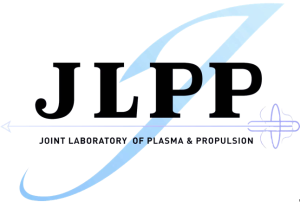A doctoral candidate member in JLPP, Guangchuan Zhang, whose article has been published on Plasma Source Science & Technology. The title of this article is Magnetic field deflection in a 100 W Hall thruster with permanent magnets.
Abstract:
The compact structure restrains the application of magnetic shielding in low-power Hall thrusters (LpHTs), leading to an asymmetric magnetic field or partial magnetic shielding of the channel wall. This study employs a trim coil to implement an asymmetric magnetic configuration in a 100 W laboratory Hall thruster. The locations of the maximum curvature of magnetic lines are deflected toward the inner and outer channel wall corresponding to the inward and outward deflected magnetic field configurations. Effects of the magnetic field deflection on the position of the ionization zone, efficiency of the thruster, discharge oscillations, and wall erosion are studied. Optical imaging and electrostatic probes are employed to monitor and scan the plasma beam. Experimental results show that the outward deflection induces a change in the magnetic mirror effect and alters the location of the ionization zone. The radial movement of the ionization zone away from the inner channel wall decreases the near-wall conductivity, reducing the electron current by 13.5% and promoting the current efficiency. Discharge oscillations are suppressed, and the propellant utilization efficiency is improved by 8.2%. Erosion of the channel wall shows an improvement of 40%. Generally, an outward deflected magnetic configuration can significantly improve the performance of LpHTs.

Facilities and the experimental setup

Plume features under different magnetic deflections. (a) Deflections of the magnetic field configuration, (b) images of the high-density plasma ‘torus’ inside the discharge channel, (c) light intensity distribution inside the discharge channel.
Link: Magnetic field deflection in a 100 W Hall thruster with permanent magnets – IOPscience
Editor: Ruojian Pan
